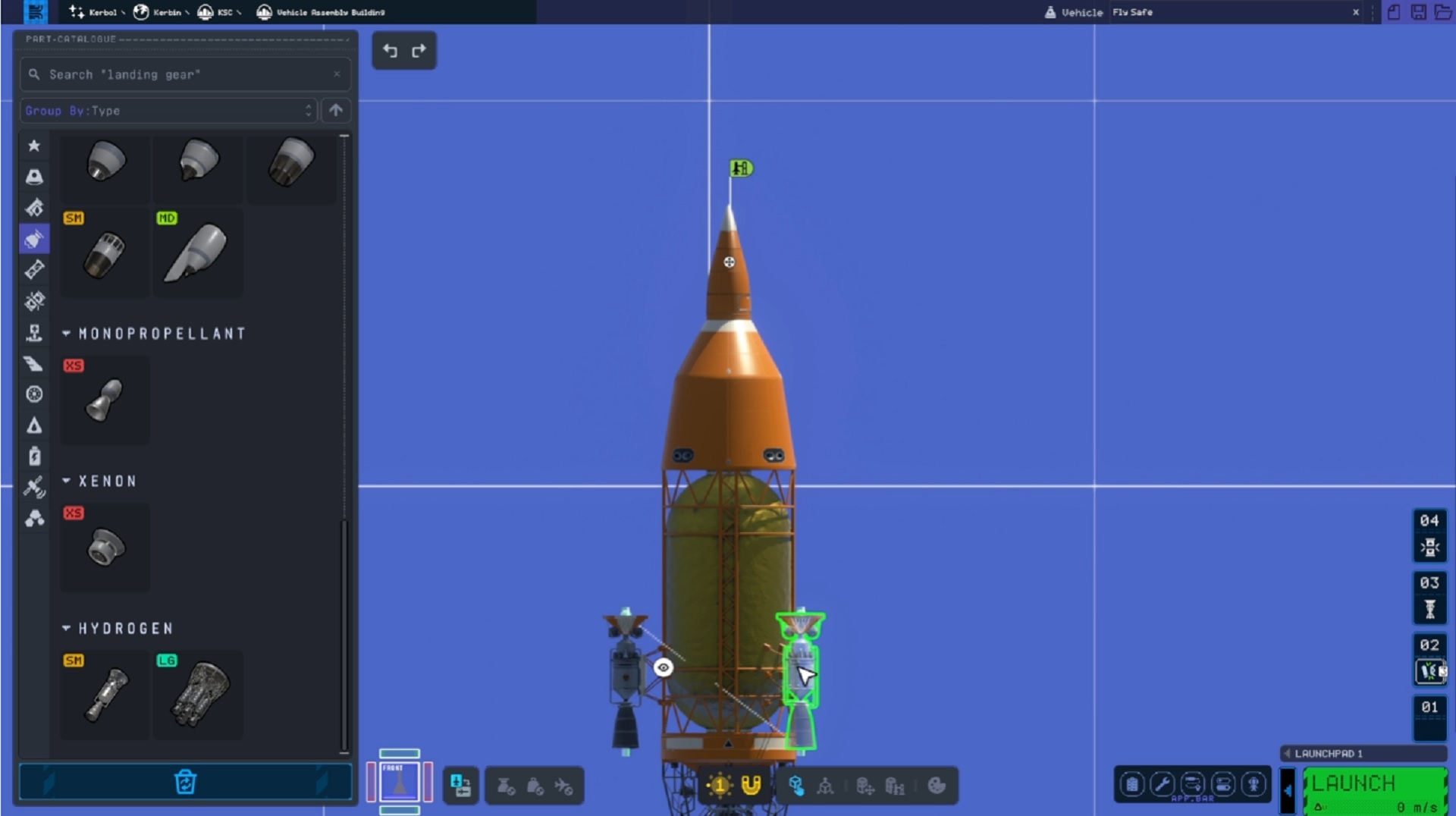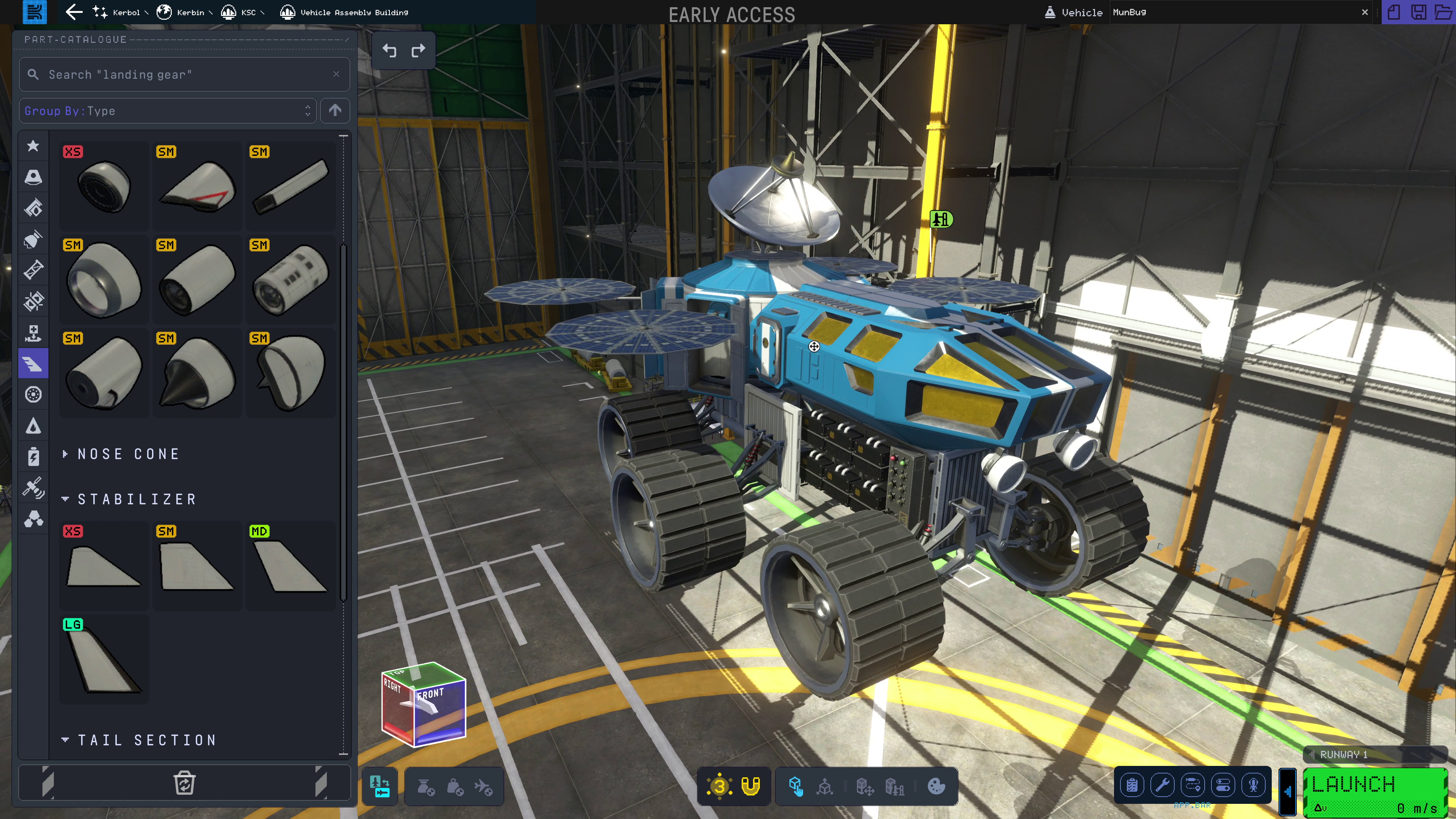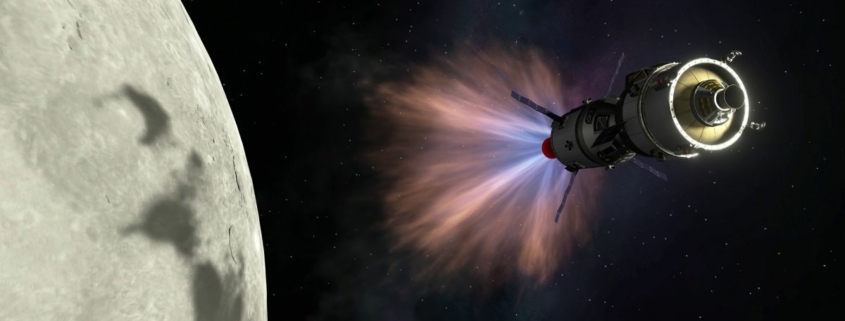Kerbal Space Program 2’s new blueprint mode makes rocket building more accessible, even if you’re just as likely to crash


I went into Kerbal Space Program 2 feeling quite confident. I’d put away a decent amount of hours with its predecessor and expected—wrongly, as it turned out—that I’d be able to get a rocket into orbit and even fly to the moon (or Mun as it’s called in KSP). Turns out, there’s no future in rocket building for me. My career trajectory from Guides Editor to rocket scientist seems to have come to an explosive end, but at least I had a parachute equipped.
My thoughts go to Bill Kerman’s family, the little green dude who willingly sacrificed his life in the name of extremely bad rocket building—several times, in fact. Bill was one of the few green beings who were unfortunate enough to brave my designs. On more than one occasion, Bill and his crewmates came crashing back down to the planet, exploding in a fiery blaze as the rocket bullseye’d into the desert, though I was able to plunge them into a watery grave on occasion.

Despite my failures, vehicle creation is relatively straightforward and a lot of fun. KSP2 comes complete with a new blueprint layout screen and toggleable snap mechanics so you can get those extra fuel boosters coupled to your rocket just right, and make other interesting compound shapes. Nate Simpson, KSP2’s creative director, highlighted the community’s frustration with the lack of precision-building in KSP. Regarding the new blueprint tool, he says: “All of a sudden, you’re an architect in this beautiful, clean world of parallel lines and it’s wonderful.”
It really did make a massive difference when building a rocket, especially when you’re not exactly technically minded. You can add multiples of the same decouplers and align them all perfectly in blueprint mode if you wish, or you toggle off snap mode, place them any old way and hope for the best. I did just that and ended up making a plane with the fuel booster somehow attached to its underside, so you can imagine how well that launch went.
One does not simply add more boosters
KSP2 comes complete with a new blueprint layout screen and toggleable snap mechanics so you can get those extra fuel boosters coupled to your rocket just right.
The actual physics behind rocket launches and reaching orbit is bafflingly complicated and KSP2, much like its predecessor, is filled with scientific language meant to stealth educate you. It’s wild how, after an hour of playing in its sandbox, I was somehow an expert in explaining apoapsis and periapsis and why my rocket was, despite looking like shit, a genuine success. KSP diehards will appreciate the lengths the team has gone to create realistic rocket building, launches and explosions, so you can live out your Space-X fantasies to your heart’s content.
Controlling the new rover, drones and planes, however, was not my forte. There’s a new sand dune buggy that you can roll in, and it has little fiddly stabilisers you can use to correct its position, but I would have had an easier time feeding my toddler remotely via a robot arm. Hit the directional keys too frequently and all of your aircraft or vehicles will start spinning wildly as you make your rapid descent back to the planet’s surface, or begin listlessly orbiting a planet for the rest of your life. Fortunately, there’s a new time-skipping function that makes your inevitable rocket crash less painful to endure.

The improved video tutorials and new UX make it more approachable for new players—much like how learning the mechanics of Crusader Kings 3 is much easier and palatable than its predecessor—and you can check the engineering notes as you build to make sure you’re not missing anything crucial, like fuel (oops!). If you don’t take the time to learn about stacking, staging and what rockets actually need, however, then there will be no successful launch for you, pal. That being said, what KSP2 doesn’t do is hold your hand. While upgrades to the manoeuver planning tool will depict non-elliptical trajectories and allow you to plan for burns better, it’s up to you to figure all that space jargon out and build a vehicle worthy of deep space exploration before you launch. Just remember that this time you can time warp using the new feature to skip your burn and arrive at your desired destination a hell of a lot faster instead of waiting too long in real life.
Space race
KSP2 is releasing in early access, so not all of its grand features will be available right away. I’m particularly looking forward to multiplayer, and Simpson talked me through his two favourite visions for how players will enjoy a co-op experience. You can create your own space agency in KSP2, complete with a flag and colour scheme. Collaborative working was at the heart of both examples, with Simpson envisioning a team of keen amateur scientists (read: players) working together to create the perfect deep-space vehicle.
“You could be working on different subcomponents of the same vehicle,” Simpson says. “I want to specialize in rovers, somebody else wants to work on the lander, somebody else wants to work on first stages—we kind of specialize as subcontractors in the same way that a real space agency does, and then work cooperatively to the same goal.”
Alternatively, you could view your peer’s agencies as rivals and create a space race as you each try to outdo each other’s designs, accumulating new technologies and knowledge more rapidly as you try to reach orbit and beyond. Personally, I’d like to see the team at PC Gamer try to create the worst rockets and see who can reach orbit and then land them first. Apologies in advance to whoever gets me on their team—maybe I can provide the snacks instead?

Simpson also spoke at length about the fact-finding missions behind KSP and KSP2, and how they consulted dozens of experts during its creation—including the staff at the European Space Agency, where this preview event was held—and the impact these dialogues had on celestial body design. Minmus was initially envisioned as an ice planet, for instance, but after consulting with an expert, Dr Joel Green, it was decided that the conditions surrounding the planet’s creation would have made it more akin to a comet, so instead, it was proposed: could Minus actually be made of glass? Spoiler: it sure is a glass planet.
Simpson admits that the current early access version won’t be particularly moddable, but he does expect players to try to find a way.
Where KSP2 differs from the majority of space games is that it takes its science seriously. Simpson explained that the art team became more like a geology department as they considered everything from sky colour due to what gases were in the atmosphere down to how the blades of grass should look due to soil composition. The new terraforming graphical overhaul makes planets and the universe look more realistic and beautiful than ever, but the effort into creating planets is what really blew my mind. When creating a celestial body—let’s look back at Minmus again—the art team worked alongside scientists to ensure they created a planet that was actually viable. That is, they weren’t placing an inordinately cold planet in close proximity to a star and expecting it to remain frozen because that’s just not how it works.
Mods? In this economy?
On the subject of modding, Simpson admits that the current early access version won’t be particularly moddable, but he does expect players to try to find a way. He states that the team “wants to provide real support, first for part modders”, with plans to support wider mods as the game stabilises throughout the early access period. There are ample parts available in the sandbox of KSP2, so I’ve no doubt that the hardcore modding community is going to come up with something wildly impressive.
While there are no exact dates in place for the KSP2 roadmap, or when the early access period will come to a close, Simpson reiterates that they are progressing in a way that’s best for the players and the current state of KSP2. It’s about making sure everything works right and minimising the risk of bugs—some of the bugs I encountered ranged from quite funny and mildly annoying, to full-blown “this rocket is spinning furiously in the sky and poor Bill’s brain must be soup by now” nonsense.
The long-term plan is to keep developing and perfecting KSP2 for years to come. A new star system is coming, changes to how science is gathered and tech tree progression, as well as even more launch locations ahead of the multiplayer release. The mood after the preview was, even for some extremely knowledgeable and experienced community members, that KSP2 is hard and all that rocket-building experience they had didn’t make them the expert builders they’d hoped—and that’s exactly what they were looking for.
Source link




